Is the Series 3 Apple Watch still usable in 2025?
I’ve been using the Series 3 Apple Watch for about three weeks now. Actually, I’ve been using three different Series 3 watches, and it’s quite interesting how even after 7 generations, the Series 3 still holds up.
But it definitely is not perfect.
The Series 3 came out back in September 2017 and is still supported by Apple when it comes to hardware repairs. Software wise, the last update it supported was watchOS 8.8.1.
The best way to talk about the Series 3 is to go all out and compare it with the Series 10 to give you a fair comparison between old and new technology.
Initial boot up
This is probably the one thing that really lets you know this is a 7 year old watch.
I did a boot test to see what was the difference in speed, but I discovered a better test, which was to see how quickly it can ping my iPhone after bootup. This way it tests how quickly the watch connects to my iPhone, which is its lifesource.
From initial boot to pinging my Apple Watch, the Series 10 was able to do it in 1 minute.
The Series 3 took 8 minutes and 50 seconds.
I know this is not a good start, but I promise it gets better.
Size comparison
I obtained 3 different models, all at the larger 42mm size. This is the size to get, since the screen is still the original square shape that was not edge to edge. The 38mm is just too small for visibility. The funny thing is, the larger Series 3 body at 42mm is the same size as the smaller Series 10 at 42mm. What was once the bigger Apple Watch is now the size of the smaller watch.
Go big or go home.
When you look at Watch faces that are mainly black and hide the bezels, the difference between these 42mm models isn’t really that big, making the Series 3 still very legible and modern. The only time you notice the smaller screen is when you have a watch face that shows the whole screen, such as Timelapse or Photos. The Series 3 does not have any other full screen watch faces, rightfully so.
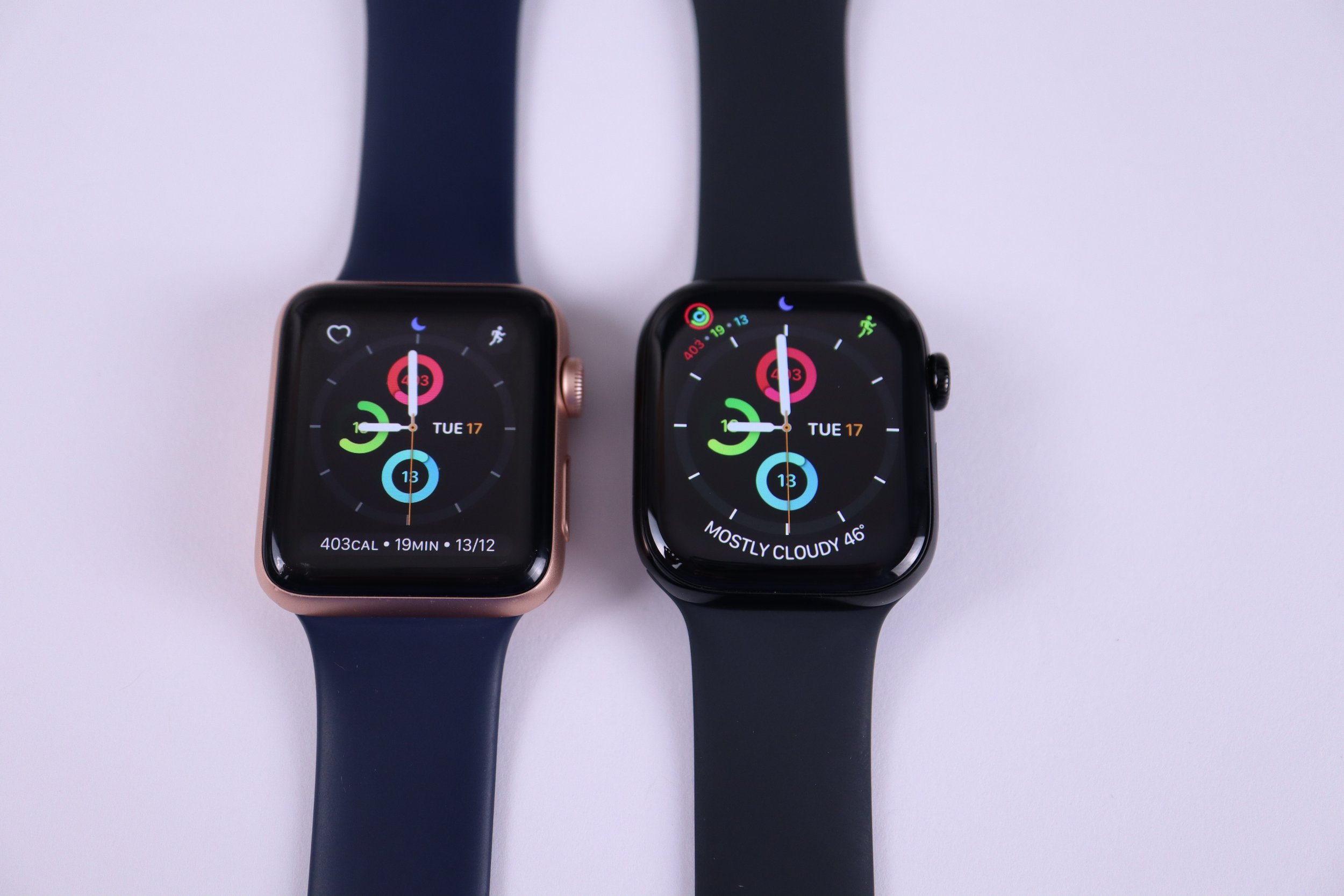
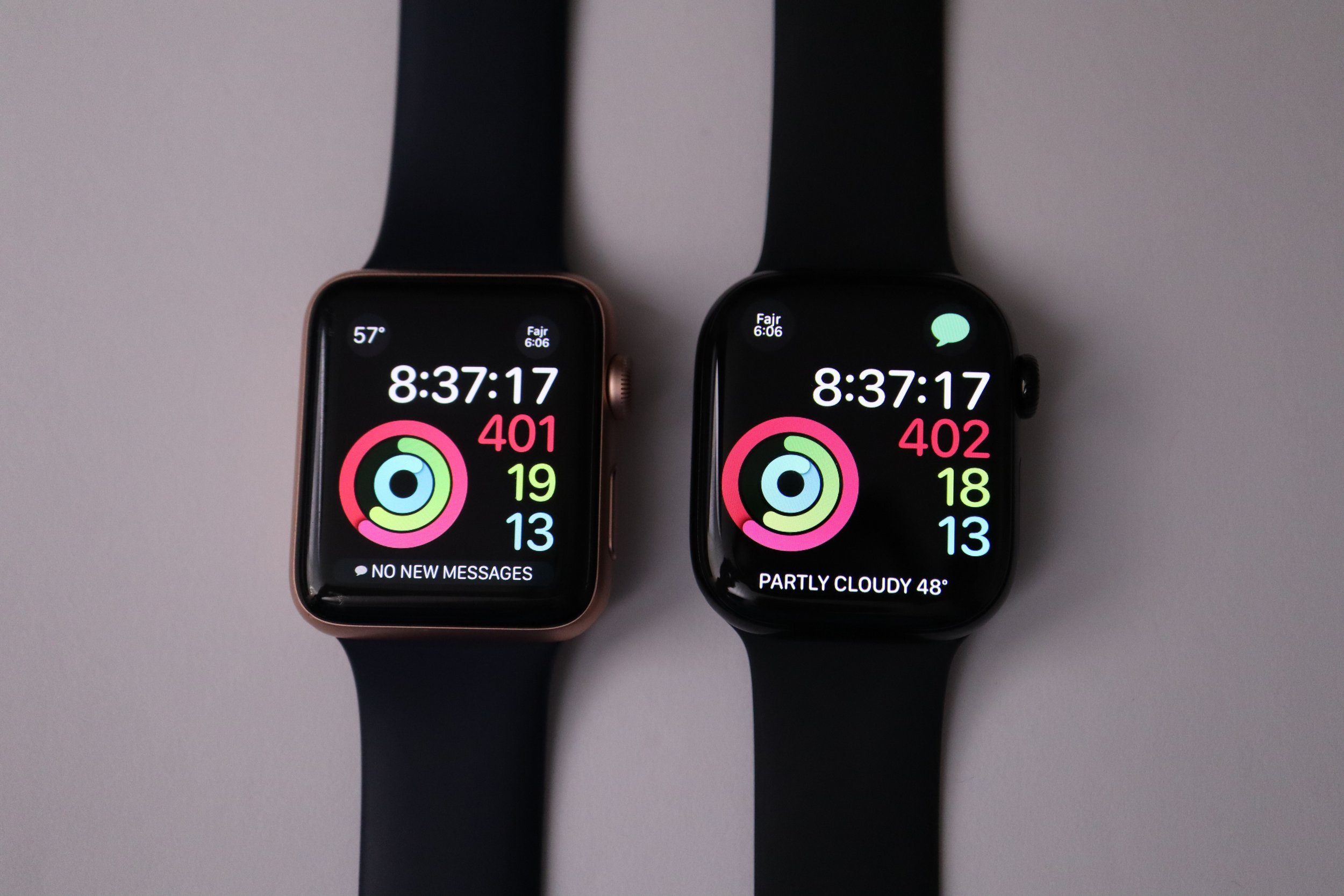
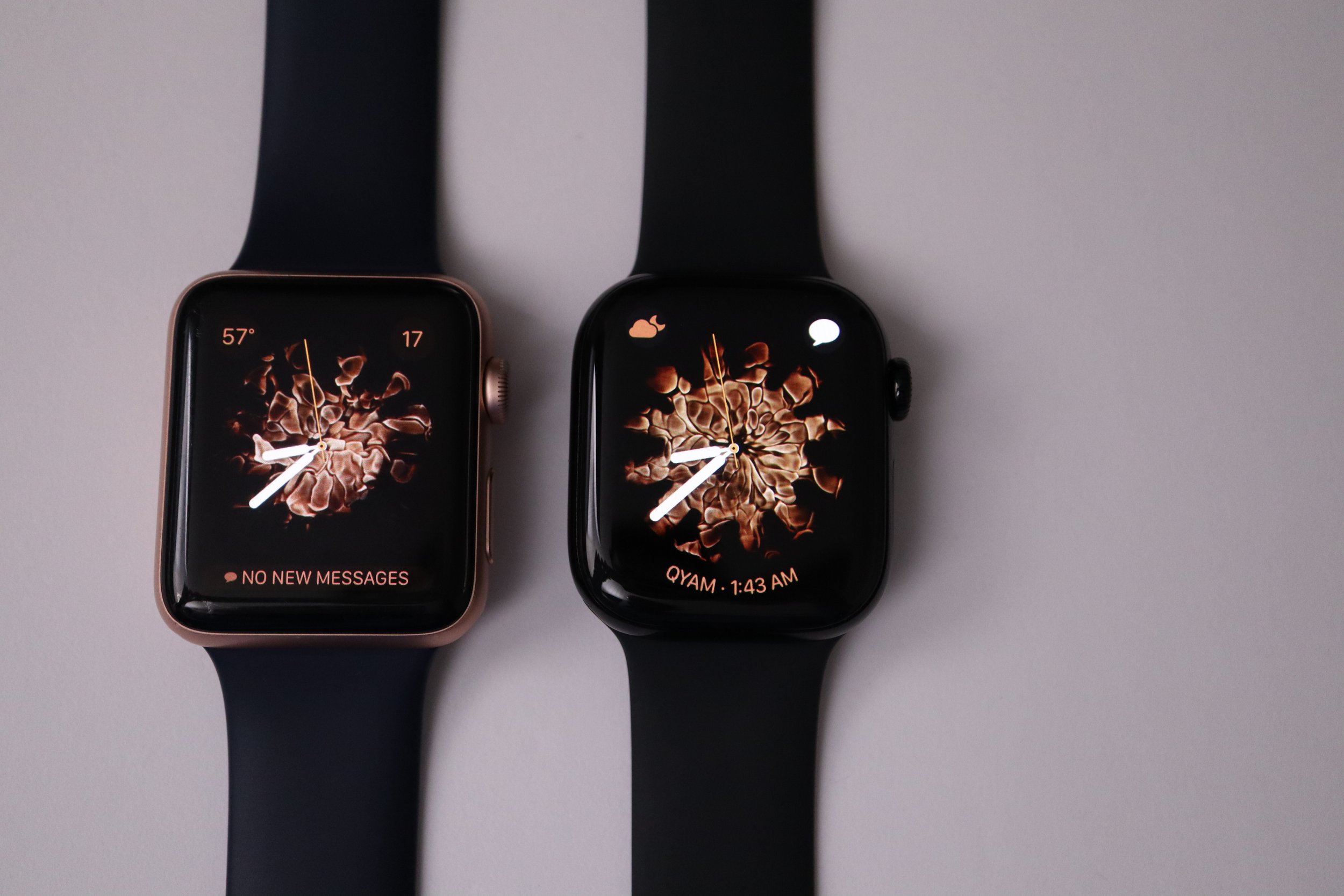
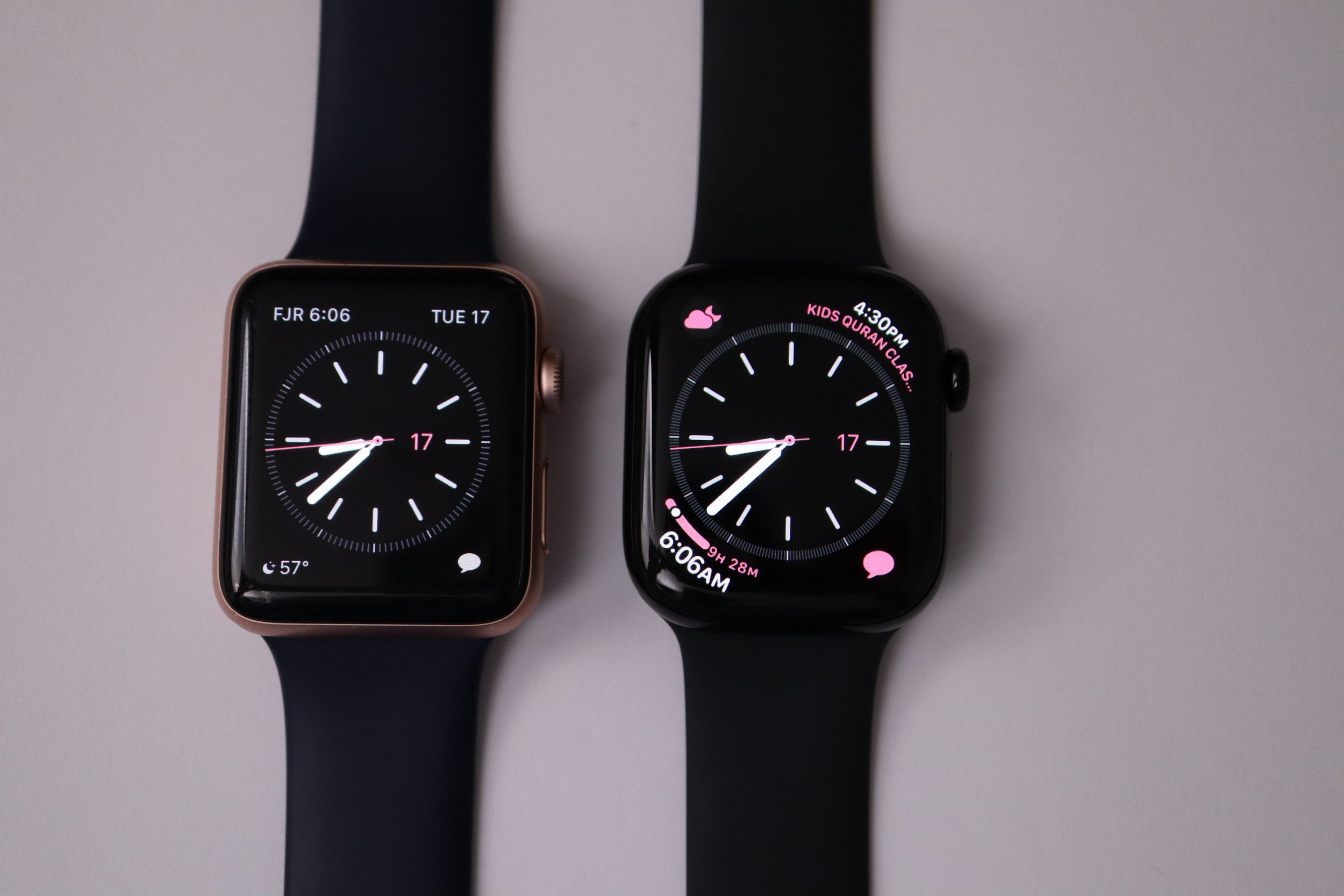
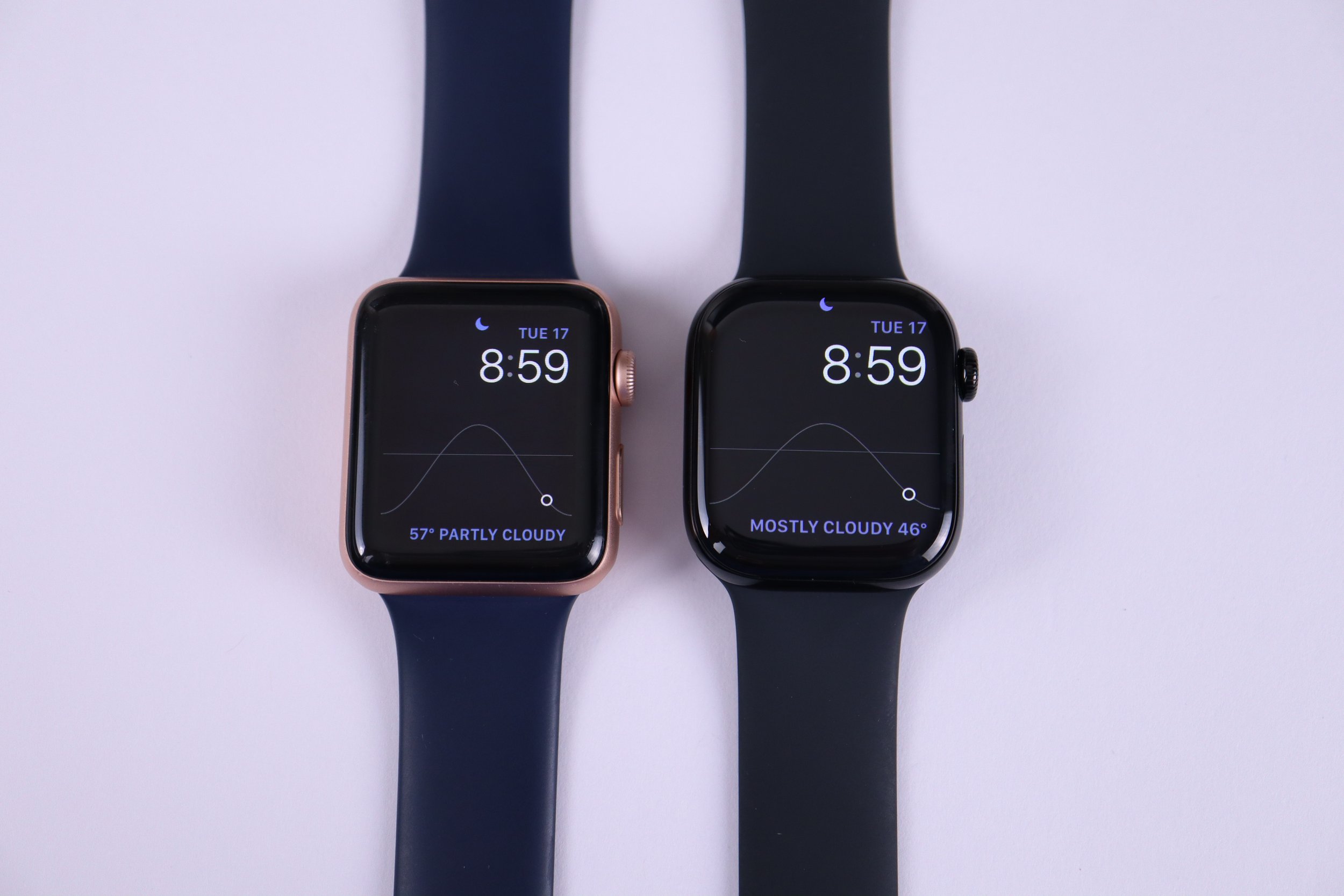
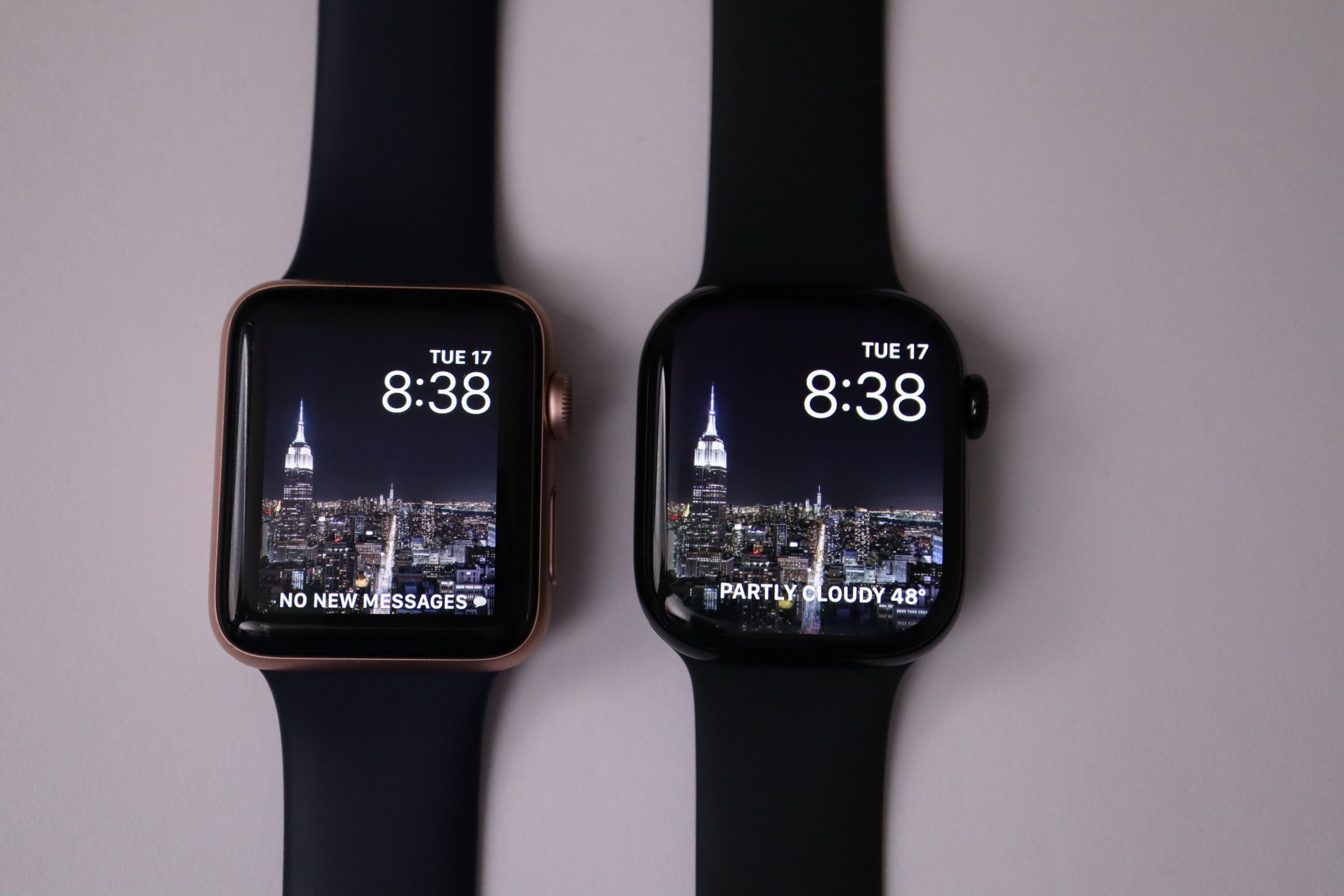
Band compatibility
Even though both watches are 42mm, they don’t support the same watch bands. A new 42mm band is smaller than the old 42mm band. It sounds confusing since the number is the same, but this is the one time the math doesn’t add up. There is a good infographic from an eBay store that shows which bands are compatible, or you can read my nitty gritty about band compatibility.
Even though the Series 3 and Series 10 have the same length and width, the Series 3 is 1.7mm thicker than the Series 10. That thickness might change what hole you use to fasten your band, and can even affect compatibility with the Solo and Braided Solo Loop that come in fixed sizes. I haven’t tested the Solo and Braided Solo Loops on my Series 3, but here is what Apple says when you click on compatibility details:
The Solo Loop and Braided Solo Loop bands are only compatible with Apple Watch SE, Apple Watch Series 4 or later, and Apple Watch Ultra or later.
Hardware differences
The basic recipe is still here between the Series 3 and Series 10. The Series 3 has the same Side Button and Digital Crown, but you don’t have any haptics when you rotate the Digital Crown. The Side Button is protruding instead of being flush like the Series 10. As a matter of fact, the Series 3 was the last watch to have the protruding Side Button.
The square shape of the Series 3 is more obvious and Apple has addressed the squareness by chipping away at the corners over the years, making it rounder than it has ever been on the Series 10. I can see why Apple initially got a lot of criticism for releasing a square shaped watch when all the watch faces were round.
Even though the shape has changed over the last 7 years, there is no denying that it is still an Apple Watch at first glance.
Within the Series 3 itself, there are some differences when it comes to hardware, mainly the screen and how it rests on the body. The Series 3 was the second time Apple released a Ceramic Edition model, coming in both White and Gray Ceramic. It is the only Apple Watch that came in Gray Ceramic, which tells me it probably didn’t sell well and why I was able to get one on eBay for $105.
The Ceramic models have a distinct lip or “shelf” between the display and the body, resulting in a break in the fluid feeling when you slide your finger off the screen and onto the body. This was a limitation of the Ceramic manufacturing process because even the entry-level aluminum and mid-tier stainless steel models had the seamless feel and look between screen and body. As beautiful as the Ceramic Edition is, it’s a shame they couldn’t make it as seamless considering the original $1,299 price tag.
Battery
The main issue with the Series 3 would probably be battery life since after 7 years, the battery might be shot. I acquired 3 watches, and their respective battery health was 95%, 99%, and 77%. Ironically the one with 77% looked like it was replaced since it had some residual glue on the Gray Ceramic bezel, while the other two show no signs of battery replacement. I know my White Ceramic model does have an original battery, but I’ll explain how later.
Either way, the battery life is great. Since the Series 3 does not have an Always-On Display, it still manages to get its 18 hour battery life, and even more. Even my Gray Ceramic one that has 77% Battery Health went from 94% to 17% in 23 hours, with a 4-hour period where I didn’t wear the watch. The watch then went to 10% within the next 10 minutes reflecting the bad battery health. I wouldn’t trust the battery life under 20% for a battery this old, but you can still get 18 hours out of it.
There is no low power mode, so you don’t get the benefit of increasing your battery life up to 36 hours.
Performance
Although the watch does lag at times, it is more than bearable because at the end of the day, it is a watch, not your main computing device. You’re not going to edit video or compile code on these. When responding to messages, checking the weather, or setting alarms, everything is slower than a Series 9 or Series 10, but it gets the job done in reasonable time. After a few hours, you even forget about how “slow” it is since you get used to it.
In some ways, the software is actually smoother, which is one of the reasons why I got this watch. When you swipe to switch watch faces, you don’t have to wait for the time to adjust like you do on the latest Apple watches. The time is always what it is instead of the hour and minute hands having to swoop into place. Your complications are always up to date, which also makes the experience more Apple-like. This is due to the simpler interface of watchOS 8 vs the huge overhaul watchOS went through starting with watchOS 10. The older, more simpler software keeps the 7 year old Series 3 nimble enough. With watchOS 10, swiping the watch faces became more stuttery and buggy, and dare I say, more Android-like.
Most 3rd party apps that I use are simple apps that don’t require much processing power. They run in the background as complications. If you use any heavy apps that require a lot of processing power, it probably won’t run well (if at all) on the Series 3.
Still Feature Rich
It might not have all the bells and whistles of the Series 10, but you still get the following benefits:
High and low heart rate notifications
Irregular rhythm notifications
Low cardio fitness notifications
Sleep tracking
Cycle Tracking
Noise Monitoring
Ping your iPhone
Ping your watch with your iPhone
Water resistance (tested and still intact after 7 years(!), but YMMV)
LTE
Features that are absent:
HomeKit compatibility (the new Matter Standard probably broke this.)
Fall detection
Always On Display
Can’t assign watch faces to focus modes
Fast charging
Digital Crown haptics
Emergency SOS
Vitals App
Quirks
There are ways around some of the limitations of the Series 3. For the always-on display, you can still rotate the digital crown to slowly wake up the display to glance at the time (also available on current watches). You also don’t have to worry about whether your display is “always on” vs actually on, because it is either ON or OFF. No confusion there.
You also get the original modular watch face, which was updated in future revision of watchOS. The original modular watch face was unique in letting you change the color of the digital clock with your color choice, whereas the new modular only gives you black and white options for time, depending on the color you choose.
Your watch faces are limited compared to the Series 10 which has many more full screen options, but you do get the following discontinued watch faces on the Series 3:
Of these 4 options, the Explorer watch face is my favorite, giving you red watch hands as an option. It’s also Jony Ive’s favorite watch face.
Source: Hodinkee
An important quirk of the Series 3? It lets you know immediately when your iPhone is out of range with a crossed-out, red iPhone on your screen, so you don’t ever get too far from your iPhone.
Why did I buy 3 of them?
I didn’t mean to buy three of these, it just happened.
I bought a cheap Rose Gold option as a testing device that had 95% battery health, but once I realized how useful the Series 3 is, I decided to go premium and get both Ceramic editions on eBay.
The Ceramic does add a lot of class, and I was fortunate to get the exclusive ceramic Sport Bands bundled with the watch that included a ceramic pin instead of a stainless steel pin.
I could have skipped on the Gray Ceramic as the White Ceramic is definitely more beautiful, but at the cheap price that I got it for, it’s worth holding onto. It really shines in the light versus dark environments.
These watches are old, and you can find great deals on them. The Rose Gold 42mm was $65 with 95% battery health. The Gray Ceramic was $105 with 77% battery health, but if I send it to Apple to get it replaced for $79, I’m looking at around $200 all-in for a fully healthy watch that once retailed for $1349.
Lastly, I found a unicorn Series 3, 42mm White Ceramic that was barely used by the original owner, and it included the box with all the accessories for around $350. It had 99% battery health, and the band that was “used” was barely used.
Who should buy the Series 3?
If you just need a reliable Apple Watch and want the best bang for your buck, don’t buy the Series 3. You can easily get a much better experience and an always-on display for around the same price with a Series 5, especially if you are not concerned about buying a flawless watch. Just make sure to check the battery health before purchasing.
If you’re someone who appreciates Apple and are an Apple enthusiast, it would be worth buying a nice Series 3 watch since you get the best version of the original design. The original Apple Watch (known in the tech circle as the Series 0), Series 2, and Series 3 shared the same industrial design before it was changed for the Series 4.
Owning a Series 3 will be owning a piece of Apple history that is still usable today. You can get premium models for a great price on eBay, and since Apple still supports the Series 3, you can easily get screens and batteries replaced.






